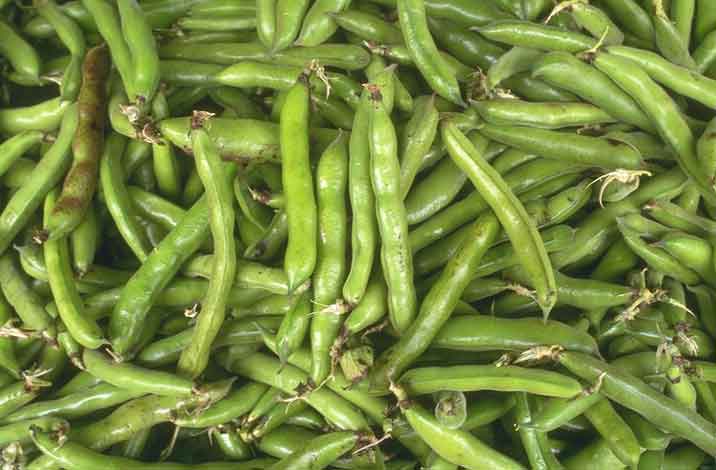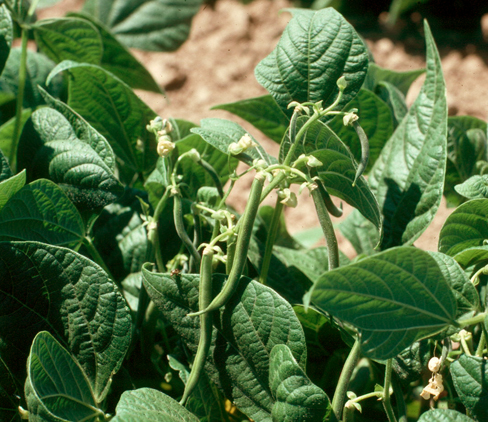Beans, Snap
The snap bean or green bean (Phaseolus vulgaris) is a warm-season crop harvested for its immature seed pods. Prior to the development of the stringless bean in the 1890s, snap beans were referred to as “string beans” because of the fiber or “string” running along the pod seam. While stringless beans are more common today, many consumers still prefer the flavor of the stringed types.
Marketing
 Farm fresh snap bean sales at farmers markets account for much of Kentucky’s commercial acreage. Significant sales are also made to produce wholesalers and at produce auctions. Other fresh market options include U-pick, community supported agriculture (CSA) subscriptions, and roadside stands. Sales to locally owned retail markets are also an option. About one-fourth of all snap beans produced in the U.S. are for fresh use; the rest are processed by canning or freezing. Fresh market snap bean use ranged between 1.5 and 2 pounds per capita between 2008 and 2016. That amount edged up slightly in both 2015 and 2016, when USDA estimated fresh snap bean use at 1.7 pounds per person.
Farm fresh snap bean sales at farmers markets account for much of Kentucky’s commercial acreage. Significant sales are also made to produce wholesalers and at produce auctions. Other fresh market options include U-pick, community supported agriculture (CSA) subscriptions, and roadside stands. Sales to locally owned retail markets are also an option. About one-fourth of all snap beans produced in the U.S. are for fresh use; the rest are processed by canning or freezing. Fresh market snap bean use ranged between 1.5 and 2 pounds per capita between 2008 and 2016. That amount edged up slightly in both 2015 and 2016, when USDA estimated fresh snap bean use at 1.7 pounds per person.
Fresh snap beans are a mainstay for direct vegetable marketing. Consumer familiarity with the crop, a greater emphasis on the health benefits of eating fresh produce, and sales to ethnic markets help keep fresh snap bean sales strong or growing. Good market opportunities exist for producers growing heirloom or specialty beans varieties.
Production
 Snap beans are either pole (runner and half-runner) or bush types. Bush beans form compact plants 1 to 2 feet in height, while pole beans produce vines that may reach 8 to 10 feet in length. Half-runners have a growth habit between bush and runner, producing vines averaging 3 feet long. Typically, pole beans set pods over a longer period of time than bush beans. Pods of either type may have strings or be stringless; they may be round or flat in shape. While green is the most common color, pods may be yellow (wax beans), purple, or streaked. Commercial growers should select only adapted varieties that have the qualities in demand for the intended market. Consideration should be given to regional preferences, as well as whether to grow heirloom cultivars, such as greasy beans. To reduce the possibility of seed-borne diseases, purchase western-produced seed.
Snap beans are either pole (runner and half-runner) or bush types. Bush beans form compact plants 1 to 2 feet in height, while pole beans produce vines that may reach 8 to 10 feet in length. Half-runners have a growth habit between bush and runner, producing vines averaging 3 feet long. Typically, pole beans set pods over a longer period of time than bush beans. Pods of either type may have strings or be stringless; they may be round or flat in shape. While green is the most common color, pods may be yellow (wax beans), purple, or streaked. Commercial growers should select only adapted varieties that have the qualities in demand for the intended market. Consideration should be given to regional preferences, as well as whether to grow heirloom cultivars, such as greasy beans. To reduce the possibility of seed-borne diseases, purchase western-produced seed.

